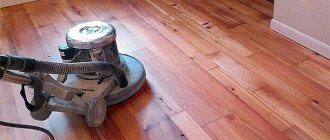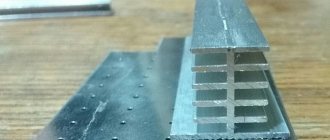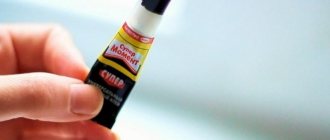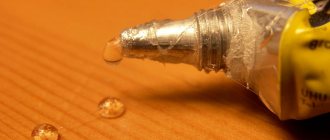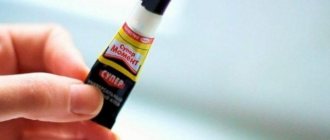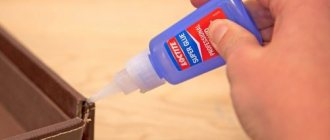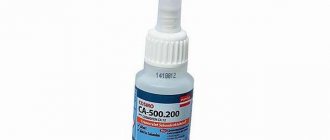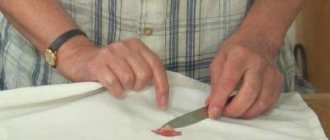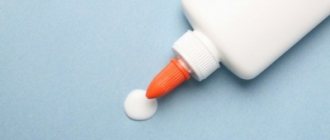Anticlean
Manufacturers of adhesive substances, realizing the problem, have developed special products that can also clean the products of their competitors. To achieve a positive result, it is imperative to read the instructions for using the product. Such substances are quite toxic and during their use it is advisable to observe appropriate safety measures, which are usually indicated on the packaging.
One of the popular products of its kind is Secunda anti-glue. In addition to high performance on products of the same brand, it also shows decent results on other adhesives made on the basis of cyanoacrylate. Sold in automotive and construction stores, places where household chemicals are sold, and hardware supermarkets. With its help, you can wipe off dried glue from almost any plastic surface, for example, from a phone, not to mention materials such as metal or glass.
Security measures
When working with superglue, you must take the following precautions:
- since this substance is toxic, the room should be well ventilated;
- To prevent the glue from getting on your skin, you should not point the tube at yourself, and work with gloves;
- It is not advisable to roll up or bend a half-used tube, because it may crack in these places and the leaking glue will leave stains.
To safely use this very useful tool in everyday life, you need to act carefully and carefully - then you will not have to eliminate unpleasant consequences.
Soapy water
Regular soap will help remove adhesive stains from materials sensitive to aggressive solvents. Any variety of it will do, it’s especially convenient to use liquid varieties, and if they are unavailable, take a soap bar and grate it. The concentration of the solution does not require special precision - approximately 5th part of a bar per half liter of water.
- Wet the affected area with the prepared solution. For wetting, we use a small cloth, which we leave on the smudge after applying the mixture.
- After about an hour, use a rough cloth to wipe off any remaining dirt from the surface.
If the stains are not completely cleared, the procedure must be repeated.
Acetone, solvent or white spirit
Second glue is easily corroded by solvents. The process is as follows:
Add a teaspoon of solvent to a tablespoon of toothpaste and stir thoroughly;
- Apply the prepared mixture to the stain and leave for 15 minutes.
- Using a soft toothbrush, we try to wipe away traces of glue; to do this, rub the dried mixture in a circular motion.
- Use a plastic spatula to remove any remaining dirt, then wipe the surface with warm soapy water.
Aggressive cleaning liquids should be used with caution, after testing on an inconspicuous area, this is especially true for acetone.
How and with what to remove superglue from a lock?
Methods for removing superglue from a lock:
- Cyacrine solvent Z7 DEBONDER
- Nail Glue Remover - liquid for removing acrylic or gel nails
- Dimethyl sulfoxide is a drug
- Direct a stream of hot air from a household hair dryer to dry your hair, then it softens
- Glue remover “Super Moment Antiglue” (Henkel), in a tube similar to super glue
How and with what to remove superglue from a lock?
As you can see, superglue can be removed. Before using any product, try to test it on inconspicuous places.
Lemon juice
A worthy alternative to a solvent, which also will not cause harm to any surfaces being cleaned, is lemon juice or an aqueous solution of its powder concentrate. It is used to clean not only hard products. It will also easily and safely remove dried glue from the leather of boots, leatherette and other similar materials.
- Squeeze the lemon directly onto the glue stain.
- We wait 5 minutes, add more juice and clean the treated area with smooth circular movements. This is best done with a toothbrush or a rough rag.
- Remaining contaminants can be washed with warm water; it is advisable to neutralize the acid with a small amount of alkali, for example, a solution of baking soda.
Fourth method
You can wash second glue from clothes using temperatures. There are two ways:
- Heating the fabric with an iron or hairdryer.
- Cool the contaminated area in the freezer compartment of the refrigerator.
Exposure to low or high temperatures makes the adhesive brittle. After this, the remaining sticky stain can be easily scraped off with a knife, pumice stone, nail file or any other sharp object. The main thing is not to damage the fabric. Naturally, this method is not suitable for skin.
Mineral motor oil
The use of such products implies that the surface being treated is resistant to oil components. Parts painted with polyurethane or acrylic paints and varnishes may lose their protective layer. Unpainted wood can be safely cleaned with oil. The process is quite simple: apply oil to the glue marks and wait half an hour. During this time, the adhesive film will soften and peel off at the edges, after which it can be removed from the affected area without much difficulty.
Mechanical cleaning of wooden products
The easiest and fastest way to remove superglue from unpainted wood is to sand it. This option has only positive aspects: it is non-toxic, it only takes a couple of minutes, the stain will disappear without a trace, there is no need to use cleaning agents or solvents. The only tool needed to successfully remove adhesive stains is fine-grained sandpaper. The finer the abrasive on the sandpaper, the smoother the wooden surface will be subsequently.
Rules for removing glue from various surfaces
Textile.
The thinner and softer the fabric, the more delicate the glue removal method must be. Untested products and aggressive chemicals can ruin the item. Therefore, if you are in doubt about the chosen method, it is better to contact a dry cleaner.
Natural fabrics are more resistant to attack, so you can use strong cleaning agents, such as acetone.
For silk and satin, a vinegar solution is suitable. To prepare it, dilute 1 tbsp. l. in 1 glass of water and moisten the stained area generously. When the glue comes off, you can wash the item.
Cotton and knitwear can be cleaned with a brush after soaking the clothes in a soapy solution.
Leather and suede.
Cleaning leather clothes, shoes or accessories is simple: drop a couple of drops of nail polish remover onto the glue. When it softens, carefully scrape it off.
Cleaning dirt from suede is more difficult. First, dampen the stain a little with water. Then hold the item over steam or heat it with a hairdryer to soften the glue. Next, apply acetone, ammonia or gasoline to the stain. Wait a few minutes and carefully scrape off the dirt. Finally, treat the suede with impregnation.
Tree.
Painted and varnished surfaces can be cleaned with motor oil, and unpainted wood can be sanded with sandpaper. Plywood and chipboard will withstand exposure to vinegar, lemon juice and acetone.
Glass and tiles.
It is easy to remove glue from a smooth surface. Any of the above chemicals will do, but it is better to choose the safest methods - mechanical cleaning, dishwashing detergent, lemon juice.
Plastic and silicone.
You can remove sticky stains from plastic objects using dimexide or white spirit solvent.
Metal.
Metal surfaces can be treated with hydrogen peroxide, dimexide or false eyelash remover. If the metal is scratch-resistant, you can scrape off the stains with a stiff sponge or brush.
Floor.
The choice of cleaning agent depends on the type of coating. For example, linoleum can be treated in any way, laminate can be treated with dimexide, and parquet can be treated with nail polish remover or anti-glue.
Ammonia and dish gel
A mixture of ammonia and dishwashing detergent will help remove adhesive stains from glass.
- Mix the above products in equal quantities.
- We wet a cloth or sponge in the resulting mixture and apply it liberally to the stain.
- Leave for an hour, and to prevent the treated area from completely drying out, periodically moisten it with a sponge soaked in the mixture.
- Using a thin, sharp object, carefully scrape off the remaining glue (a razor blade fixed in an eraser will do).
- We moisten a microfiber cloth with ammonia and rub the area to be cleaned.
This method will help eliminate glue and similar products.
In case of contact with glass
If the dirt is fresh, it can be removed with a regular rag. If the glue has already hardened and hardened, then you can use one of three methods:
Method No. 1. White Spirit
- Moisten a cotton pad and apply the solvent to the stain
- After fifteen minutes, grind off the glue using a utility knife. Be extremely careful.
Method No. 2. Vegetable oil
- Apply the oil to the stained glass and leave for an hour and a half or more.
- Remove residues using a plastic spatula or spatula.
- Wipe the glass with a special product or soap to remove oil.
Method No. 3. Ammonia
- Mix ammonia with dishwashing detergent in equal proportions.
- Apply to the stain and leave for one hour.
- Remove the glue from the glass and wipe the glass with a solution of ammonia and water (one tablespoon of alcohol per half liter of water)
If pure alcohol is not available, window cleaners containing alcohol or other volatile chemicals can be used.
Medical alcohol
It is especially effective in cases of contamination from BF brand glue, since this product is made on an alcohol basis. In cases where it is necessary to get rid of traces of superglue, achieving the desired result will require a little more time and effort, but the task will be solved. Sequencing:
- Soak a cloth in 96% rubbing alcohol and wipe the stain.
- We do this until the dirt softens and its edges begin to peel off from the surface.
- We remove the residues mechanically; if any fragments cannot be cleaned, re-wet them with alcohol, and then wipe the treated area with warm water.
Petrol
Any fuel will do, including those sold at gas stations; you can use kerosene, diesel fuel, or lighter fluid. With the help of these products, glue is perfectly removed from plastic without any negative consequences for it.
- Apply the liquid to the contaminated area.
- We wait a few minutes until the film softens.
- Wipe with a cloth or scrape off with a plastic spatula. Remaining dirt can be cleaned with soapy water.
Third method
A solution called “Dimexide” will help to quickly remove traces of second glue. It is sold in pharmacies without a prescription and is available to everyone. It is recommended to apply a few drops of the product to a cotton swab, rub the contaminated area and rinse with running water. This method has a number of advantages:
- quick result,
- low costs,
- ease of use,
- available ingredients.
Household or car windshield wiper
This method will work for minor glue stains, especially with adhesives that contain alcohol.
- Apply liquid to the stain directly from the spray bottle that comes with containers containing glass cleaning products.
- After a couple of minutes, wipe with a hard rag; if you cannot completely remove the glue, repeat the procedure.
How to wipe dry?
In a situation where super glue has left a mark on clothing for a long time, washing with powder or washing with laundry soap will be ineffective. Special compounds that can dissolve dried Moment will come to the rescue.
The structure of frozen super glue is destroyed by acetone-containing agents, alcohol, and a solvent based on dimethyl sulfoxide - pharmaceutical dimexide.
By acting on cynoacrylates, these products soften the dried stain . No less effective is an approach such as exposure to low (freezing) and high (iron) temperatures.
If the first application fails to remove traces of glue using home methods, you can try again, but using special preparations.
Removing adhesive stains from the skin of your hands
It is not so easy to wipe off superglue from the surface of the skin; ordinary water will not help here, especially cold water, which makes the glue harden even faster, and it will be somewhat more difficult to remove it. Anti-glue products are quite toxic and should not be used on the skin.
100% way to remove glue from skin - video:
Soap, warm water and pumice stone
Dissolve a little liquid soap in a container with warm water and place your hands there for 5 minutes. Then we take pumice and slowly rub the affected areas, periodically immersing our hands in water. In case of extensive contamination, it is most likely impossible to wipe off all the glue at once, so it is necessary to divide the procedure into several stages. During breaks, your hands need to be moisturized with creams, which will also help clean them of the adhesive film.
Dimexide
Another effective way to remove superglue from your hands is to use dimexide. This medication is sold in most pharmacies, and with its help you can remove glue not only from the skin, but also from any other surface. However, it must be used with caution, since there is a possibility of irritation on the treated skin. In addition, dimexide easily penetrates into the tissues of the human body and there is a possibility that substances dissolved by it will also get there along with it. Therefore, it is better to save it for the most extreme case, and if you still have to use it, you need to immediately wash off the remaining product with warm soapy water after treating the stain.
Household solvents or nail polish remover
It is better not to use solvent cleaning for people with sensitive skin, otherwise, as with dimexide, irritation may occur. Do not use such products under any circumstances if there is an open wound in the area of the stain.
- We first wet the contaminated area with warm soapy water, wait a few minutes and try to mechanically remove the glue from our hands.
- We wipe the skin dry, moisten a cotton or cloth swab in nail polish remover and gently blot the stain, then repeat attempts at mechanical cleaning.
We use fat
Any cooking fat will do, including vegetable oil or margarine, but you will first have to melt it until it is suitable for rubbing. These products are absolutely harmless to the skin and are intended primarily for people prone to allergic reactions to cleaning products and especially to solvents.
- Generously lubricate the skin of your hands with oil and let it absorb.
- Over time, the adhesive film will become looser, after which you can try to remove it with your fingernail or wipe it with a rough cloth.
- If the procedure is successful, the remaining glue and oil can be washed off with warm water.
Even if there are particles of superglue left on your hands, you shouldn’t be upset; after a couple of days, the dirt will peel off without any outside help.
How to remove quickly dried super glue using Super Moment Antiglue: instructions
This substance is quite aggressive. It removes drops of glue quickly enough from skin and other surfaces. It is worth noting that when exposed to this substance on fabric or plastic, it may become discolored.
Instructions:
- Apply a little product to the skin and wait 10 minutes
- Remove loose adhesive with a dry cloth and wash the skin
- If you are removing glue residue from surfaces, you should apply the product for 10 minutes in an inconspicuous place and rub
- If the paint has not peeled off the surface and no stains remain, it can be removed using
- Apply it to the surface for 5-10 minutes and wipe off with a dry cloth.
How to remove quickly dried super glue using Super Moment Antiglue: instructions
